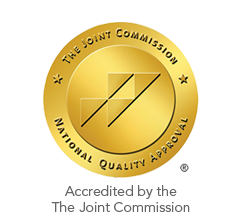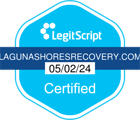Introduction
Illicit drug use remains a significant health problem in the US. Drug abuse/misuse among youth is increasing at an alarming rate. 11.2% of people aged 12 and older reported using an illicit drug in the past 30 days in 2017. In the same year, 2.2% misused a prescription drug for mental illness in the past 30 days. Drug abuse may require addiction treatment and addiction therapy services in a rehab facility.
Addiction to Prescription Drugs
- Drug overdoses killed over 70,000 people in 2017
- Each year, the US economy loses over $400 billion due to the effects of addiction. Comparatively, diabetes costs about $237 billion each year.
These effects may just be the tip of the iceberg. This is because addiction affects almost every aspect of life.
Drug scheduling is one type of approach to control addiction. Under the Controlled Substances Act (CSA), there are five drug schedules. Categorizing substances into different drug schedules has been met with mixed results.
For instance, after the Drug Enforcement Administration (DEA) banned bath salts in 2011, calls to poison control centers dipped by 89%. Similarly, after the 2006 potassium permanganate regulation, there was a 22% decrease in the seizure amount of cocaine. Potassium permanganate is used to produce cocaine from coca paste.
A few studies show these approaches are effective in reducing the rate of addiction. Thus, many researchers advocate switching to or adding public-health-focused strategies. These strategies address various social, environmental, and economic factors associated with drug misuse.
What is the Controlled Substances Act (CSA)?
Before the CSA, 200 separate laws attempted to control addictive substances. However, law enforcement agencies had a hard time monitoring those laws. President Richard Nixon signed the CSA in 1970. The CSA replaced all those laws as a single statute and came into effect in 1971. The three main goals of the CSA are to control:
Moreover, the CSA aims to reduce dangerous effects or deaths due to drug misuse.
Under the Controlled Substances Act, the DEA was founded in 1973. The DEA is the central authority involved in drug scheduling in the US. In 2014, the DEA employed over 9,000 full-time staff with an annual budget of about 2 billion dollars.
What are the Five Classes of Drugs According to the CSA?
Narcotics or opioids are a class of powerful drugs. They relieve pain, suppress cough, treat diarrhea, and induce sleep. Currently, the term includes opium, opium derivatives, and their semi-synthetic substitutes. Examples include:
- Illicit substances such as heroin
- Prescription drugs such as OxyContin, codeine, methadone, fentanyl, and morphine
In the US, narcotics are categorized as controlled substances. They fall into any of the drug schedules from I to V.
- Depressants cause sedation, induce sleep, relieve anxiety, and control seizures. Examples include benzodiazepine drugs, barbiturates, and sleep-inducing drugs like Lunesta and Ambien. GHB, which is an illicit substance, is also a depressant.
The DEA has scheduled most depressants into one of the drug schedules from I to IV.
Stimulants increase brain activity. They speed up communication between the brain and the body systems. Examples include:
- Prescription ADHD drugs (Adderall, Concerta, and Ritalin)
- Appetite suppressants (Bontril and Preludin)
- Noncontrolled chemicals like caffeine and nicotine
- Illicitly manufactured drugs such as amphetamines, cocaine, and methcathinone
Controlled stimulants fall into schedule I or II.
- Hallucinogens alter mood, perception, and awareness. These substances are derived from some plants and fungi or may be produced in a lab. Examples include ecstasy, MDMA, and some mushrooms.
In the US, Most hallucinogens are schedule I controlled substances.
- Anabolic steroids are synthetic hormones similar to the naturally occurring male hormone testosterone. Anabolic steroids are often abused to improve athletic performance and build muscle. Examples include testosterone, nandrolone, stanozolol, methandienone, and boldenone.
In the US, anabolic steroids are schedule III controlled substances.
How are Drugs Scheduled?
- Potential for abuse, whether abuse is actual or relative to other similar substances.
- Scientific evidence on the benefits and risks.
- Available data on the nature of the substance or if it can be used to produce another drug in the schedule.
- Historical and current data on the trends of abuse.
- The scope and significance of abuse.
- The degree of risk to public health.
- Psychological or physiological dependence liability.
The US Attorney General has the authority to control, decontrol, or reschedule a substance. The Attorney General often collaborates with the Secretary of the Department of Health and Human Services (HHS).
The DEA and HHS can independently begin legal proceedings to add, remove, or change the schedule of a substance. On the contrary, other parties need to file a petition to the DEA. The party may be an individual, a medical or pharmacy association, a pharma manufacturer, or a local government agency.
After receiving a petition, the DEA starts an independent investigation of the drug. The DEA may also collect information from law enforcement laboratories and local regulatory agencies.
Then, the DEA administrator, under the authority of the Attorney General, requests the Assistant Secretary for Health of HHS to check if controlling a substance is rational. The Assistant Secretary (under the authority of the Secretary) analyzes available data and recommends the DEA to add, remove, or reschedule the substance.
The Administrator evaluates the data and decides whether to propose controlling the substance. If the Administrator recommends controlling, the schedule must be specified.
Under the CSA, the DEA can control only substances with abuse potential. Surprisingly, the law does not define the term “potential for abuse.” Nonetheless, a substance with evidence of actual abuse can be considered for scheduling.
Cannabis or marijuana is a federally controlled substance. The DEA has placed marijuana or its analogs in schedule I. However, some states have switched marijuana to a new drug schedule – schedule VI. These states include North Carolina and Tennessee.
A controlled drug is a substance or chemical that may cause severe dependence, and thus their use should be regulated. These substances may or may not have accepted medical use. Controlled substances are categorized into five drug schedules by the DEA.
What are the 5 Types of Controlled Substances?
According to the CSA, the five drug schedules in the US are:
Schedule I
Among substances in the five drug schedules, Schedule I substances have the highest abuse potential. It means they are most likely to be abused/misused and carry the highest risk of causing a use disorder. Most notably, these substances have no approved use. Substances in this schedule are usually illicit drugs.
Examples include:
Personal, medical, or recreational use of marijuana is legal in some states. Nonetheless, it is a Schedule I drug, according to federal law. Notably, the DEA has included some FDA-approved cannabinoid products in schedule V.
Schedule II
Schedule II drugs have a lower abuse potential compared to schedule I substances, yet they can still cause severe physical and psychological dependence. Classes of drugs in this schedule are opioid pain medications, drugs to treat sleep problems, and stimulants.
Examples include:
- Fentanyl
- Hydromorphone
- Meperidine
- Methadone
- Morphine
- Oxycodone
- Dextroamphetamine
- Methylphenidate
- Methamphetamine
- Pentobarbital
- Secobarbital
Until a few years ago, federal law allowed prescribers to use only a paper prescription for schedule II drugs. Now they can use an electronic prescription.
The law prohibits the refilling of a prescription for drugs in this schedule. Moreover, some states do not allow dispensing more than a 30-day supply.
Schedule III
Schedule III drugs have lower abuse potential compared to substances in schedules I and II. They may cause physical dependence in some people, but they most often cause psychological dependence.
Schedule III substances include:
- Pain medications
- Drugs used to cause unconsciousness before surgery
- Appetite suppressants
Examples include:
- Benzphetamine
- Ketamine
- Phendimetrazine
- Anabolic steroids
Schedule II opioid pain medications include products that contain 90 mg or less of codeine per dosage unit and buprenorphine. A doctor can prescribe them over the phone or by using a paper or an electronic prescription.
The law does not allow refilling a prescription more than five times. Refills are permitted only within six months after the date of issuance of a prescription.
Schedule IV
Schedule IV drugs have a lower abuse potential compared to drugs (or substances) in schedule I, II, and III. Abuse may cause physical or psychological dependence, but the risks are low.
Schedule IV drugs are prescribed for pain control if a prescriber determines the benefits outweigh the potential risks.
Examples include the following:
Schedule V
Among all substances in different drug schedules, schedule V drugs have the least abuse potential. Even so, they may cause physical or psychological dependence in limited cases, so appropriate use is essential.
A doctor can prescribe them over the phone or by using a paper or an electronic prescription.
As with schedule III drugs, the law allows up to five refills within six months after the date of issuance of a prescription.
Examples include:
- Cough preparations containing codeine (less than 200 mg per 100 mL)
- Antidiarrheals that contain atropine/diphenoxylate
- Pregabalin
- Ezogabine
The law allows partial prescription fills within six months after the date of issuance of a prescription.
What are Schedule VI drugs?
Some states have created a sixth schedule that includes marijuana or prescription drugs. For instance, in North Carolina, marijuana is in schedule VI. In Massachusetts, schedule VI consists of all prescription drugs not listed in the other five drug schedules. In Idaho, schedule VI includes volatile nitrites. Tennessee lists marijuana and tetrahydrocannabinols in schedule VI, and butyl nitrite and its isomers are included in schedule VII.
Does the Federal Law Control Chemicals that May be Used in Producing Controlled Substances?
nonprescription drugs such as ephedrine, pseudoephedrine, and phenylpropanolamine.
acetic anhydride, sodium permanganate, and benzyl chloride.
A clandestine lab can use ephedrine and pseudoephedrine to make methamphetamine. Likewise, acetic anhydride is an essential precursor for producing heroin.
Wholesale distributors that sell List I chemicals must register with the DEA. Besides, there are sales limits and purchase limits for these chemicals. For example, a seller cannot sell more than 3.6 grams (per day) of each chemical in SLCPs to an individual. The purchase limit for an individual is 9 grams in a 30-day period.
Does the DEA Regulate Substances that are Similar to Controlled Substances?
However, the law comes into effect only if the analogs are intended for human consumption. Thus, it may not be applicable for a pack of spice that includes a disclaimer of “not for human consumption.”
What is Temporary and Emergency Scheduling?
The DEA can schedule a drug as a controlled substance for a specified period. Depending on the ongoing evaluation, scheduling may extend or become permanent. The DEA placed fentanyl-related substances in schedule I. The placement started on February 6, 2018, and will continue until February 6, 2020. In 2014, the DEA temporarily scheduled ten types of bath salts as schedule I substances.
The DEA can schedule a substance under the emergency scheduling provision of the CSA. Emergency-scheduling applies to substances that need immediate regulatory action. In 2000, Congress concluded that GHB posed a serious threat to public safety. Thus, they asked for urgent action. It led to the inclusion of GHB onto Schedule I in the same year.18
Can You Buy an OTC Drug that is Included in the Controlled Substance Schedule?
- The purchaser is 18 years or older, and produces a proof of age.
- The pharmacist directly dispenses the drug and maintains a record. The record book must contain the following information:
In such instances, the pharmacist is not allowed to dispense (at retail to the same purchaser in any given 2-day period):
- More than 240 cc (8 ounces) of any such controlled substance that contains opium
- More than 120 cc (4 ounces) of any other such controlled substance
- More than 48 dosage units of any such controlled substance that contains opium
- More than 24 dosage units of any other such controlled substance
Can a Controlled Substance be Prescribed in an Emergency?
- A person needs the drug right away to ensure proper treatment.
- There is no substitute for the drug.
- The prescriber is unable to provide a written prescription at the time. In such cases, the prescriber may prescribe the controlled drug over the phone. Nonetheless, they must furnish a written and signed prescription to the pharmacy within a week.
The prescription must fulfill the following requirements:
- The amount of the prescribed drug must be just enough to treat the patient during the emergency period. If the person needs the drug beyond the emergency period, a written prescription is necessary.
- The pharmacist must document the prescription order (over the phone) right away. It must include all information, except for the signature of the prescriber.
- If the prescriber fails to furnish a written prescription within a week, the pharmacist must report to the local DEA Diversion Field Office.
https://www.cdc.gov/nchs/fastats/drug-use-illicit.htm
https://www.ncbi.nlm.nih.gov/books/NBK424860/
https://www.ncbi.nlm.nih.gov/pubmed/23617711
https://www.ncbi.nlm.nih.gov/pmc/articles/PMC5024027/?report=classic
https://www.ncbi.nlm.nih.gov/pmc/articles/PMC3839489/?report=classic
https://www.dea.gov/sites/default/files/drug_of_abuse.pdf
https://www.ncbi.nlm.nih.gov/pubmed/30272400
https://www.lcle.la.gov/sentencing_commission/Resources/I%20C.%20TN%20drug%20laws.pdf
https://www.ncbi.nlm.nih.gov/pubmed/24611212
https://www.ncjrs.gov/pdffiles1/Digitization/184295NCJRS.pdf

 Matthew Beck B.A, M.A, LMFT
Matthew Beck B.A, M.A, LMFT 


